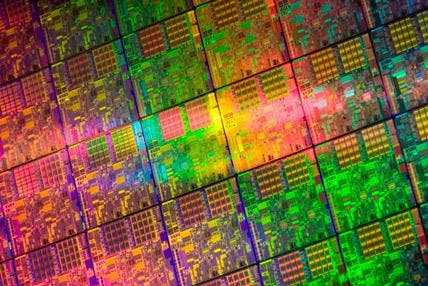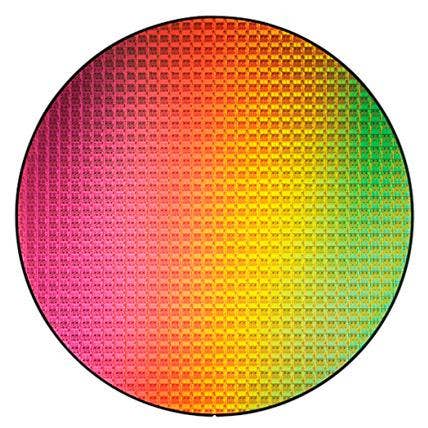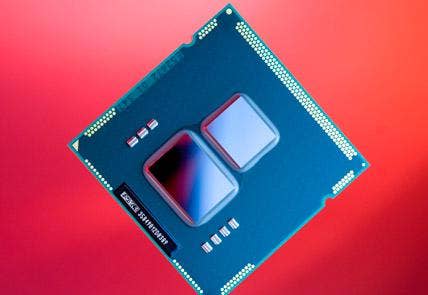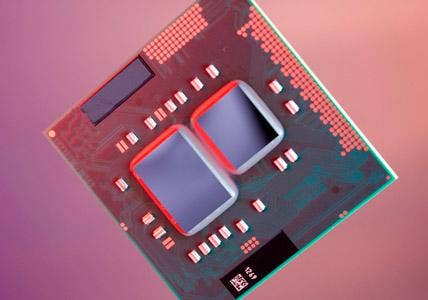Intel To Launch First 32nm Westmere-Class Chips At CES
It's official -- Intel will launch 17 new desktop and mobile processors based on its 32-nanometer process technology on Jan. 7, 2010 at the Consumer Electronics Show in Las Vegas, the company confirmed Thursday at a press conference in San Francisco.
The Santa Clara, Calif.-based chip giant will also release three new chipsets and seven wireless modules on Jan. 7 for a total of 27 new products associated with its next-generation 32nm technology, codenamed Westmere. All of those products are in "volume production," according to Uday Marty, director of notebook marketing at Intel.
"There will not be a long delay from the [Jan. 7] announcement to system availability," he said. Intel has secured 400 designs wins for its first large release of Westmere-class processors, Marty said, though he would not name computer manufacturers who are building Westmere-based desktop and notebook PCs.

Intel's first Westmere-based chips will debut Jan. 7.
The first Westmere products are based on the Nehalem microarchitecture first introduced with the Core i7 line of desktop processors in late 2008 -- an example of Intel's latest process shrink "tick," Westmere, meeting its most recent architecture update "tock," Nehalem, as part of the company's famed "tick-tock" product development cadence for its server and client products.
However, that's not to say that Westmere is only a die shrink. In this new series of processors, Intel has also reduced the number of dies it used in previous Nehalem-generation and Core-generation CPU packages from three to two -- the first being the 32nm processor itself with I/0 and the second featuring a 45nm graphics controller.

Moore's Law in action -- Intel's 32nm process technology on the wafer.
So why isn't Westmere being pitched as a "tock" as well as a "tick"? One is tempted to guess that it's simply because Intel doesn't want to confuse matters and spoil the symmetry of its cadence. But it's also because this microarchitecture change is driven by the new process technology more than anything else -- Intel can squeeze more functionality onto a given silicon die with 32nm transistors than it could at 45nm.
Meanwhile, Intel's Atom family of processors for netbooks, small desktop PCs and handheld devices follows a separate development cadence alongside the tick-tock model. The company is also planning to launch Atom products at CES but is holding those details closer to the vest.
Next: Clarkdale And Arrandale Specs, Prices
Intel's internal codename for its new Westmere-class desktop chips is Clarkdale, while the 32nm mobile chips are codenamed Arrandale. The 17 new CPUs debuting in January will be spread across Intel's Core i7, Core i5 and Pentium brands, and are also included in Intel's new entry-level mainstream processor family debuting at CES, the Core i3 line.

Intel's Clarkdale desktop processor.
Intel is also reportedly targeting March for the release of a six-core, 32nm, 3.33GHz desktop chip called the Core i7-980X Extreme Edition.
All of the Westmere products set for the Jan. 7 unveiling are dual-core chips. Those parts are matched with Intel's next generation of integrated graphics products, which it is now calling Intel HD Graphics in place of the older Graphics Media Accelerators (GMA) they replace. In addition, the Core i7 and Core i5 parts feature Intel's Turbo Boost and Hyperthreading technologies.

Intel's Arrandale mobile processor.
Intel did not break out pricing or specifications for individual processor SKUs in the initial Westmere offering at Friday's media event. However, according to earlier reports, it appears that the launch includes five new 32nm Core i7 mobile processors, four Core i5 desktop chips and three more Core i5 mobile parts, two Core i3 desktop chips and another two Core i3 mobile chips, and one Pentium for desktops.
Here's a breakdown of reported product names, prices and specs for the initial Westmere release:
Desktop/Clarkdale
(Note: The Core i5 661 has a faster GPU than the other Core i5 parts but also a higher power draw.)
Core i5-670 (3.47GHz, 73W, 4MB L3 cache) -- $284
Core i5-661 (3.33GHz, 87W, 4MB L3 cache) -- $196
Core i5-660 (3.33GHz, 73W, 4MB L3 cache) -- $196
Core i5-650 (3.20GHz, 73W, 4MB L3 cache) -- $176
Core i3-540 (3.07GHz, 73W, 4MB L3 cache) -- $143
Core i3-530 (2.93GHz, 73W, 4MB L3 cache) -- $138
Pentium G6950 (2.80GHz, 73W, 3MB L3 cache) -- $87
Mobile/Arrandale
Core i7-620M (2.67GHz, 35W, 4MB L3 cache) -- $332
Core i7-640LM (2.13GHz, 25W, 4MB L3 cache) -- $332
Core i7-620LM (2.00GHz, 25W, 4MB L3 cache) -- $305
Core i7-640UM (1.20GHz, 18W, 4MB L3 cache) -- $305
Core i7-620UM (1.07GHz, 18W, 4MB L3 cache) -- $278
Core i5-540M (2.53GHz, 35W, 3MB L3 cache) -- $257
Core i5-520M (2.40GHz, 35W, 3MB L3 cache) -- $225
Core i5-430M (2.27GHz, 35W, 3MB L3 cache) -- Price not known
Core i3-350M (2.27GHz, 35W, 3MB L3 cache) -- Price not known
Core i3-330M (2.13GHz, 35W, 3MB L3 cache) -- Price not known